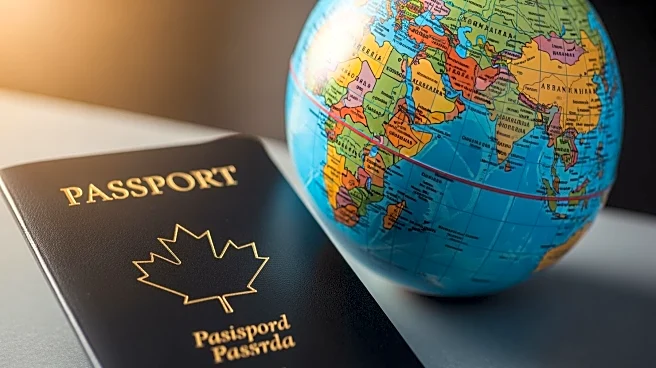What's Happening?
Canadian travel to the United States experienced a significant decline in August, with a 29.7% decrease from the previous year, totaling 2.9 million trips. This trend reflects a broader reduction in cross-border
travel between Canada and the U.S. Meanwhile, overseas travel to Canada saw an increase, with a 9.2% rise in non-U.S. resident arrivals, primarily from Europe and Asia. The United Kingdom, France, and Germany accounted for a third of these overseas arrivals, indicating growing interest in Canada as a travel destination from these regions. Additionally, more U.S. residents traveled to Canada than Canadians to the U.S. in August, despite a slight 1.4% decrease in U.S. visitor arrivals compared to 2024. U.S. residents accounted for 78.1% of all non-resident trips to Canada, marking the third instance since June 2006, excluding the pandemic period, where this ratio was observed.
Why It's Important?
The decline in Canadian travel to the U.S. and the increase in overseas visitors to Canada could have significant implications for the tourism industry in both countries. For the U.S., the reduction in Canadian visitors may impact local economies, particularly in border states that rely heavily on Canadian tourism. Conversely, the rise in overseas visitors to Canada suggests a shift in travel preferences, potentially benefiting Canadian tourism and hospitality sectors. This trend may encourage Canadian businesses to focus more on attracting international tourists, which could lead to increased investment in marketing and infrastructure to accommodate diverse visitor needs.
What's Next?
If the trend of declining Canadian travel to the U.S. continues, it may prompt U.S. tourism boards and businesses to develop strategies to attract Canadian visitors back. This could include targeted marketing campaigns or partnerships with Canadian travel agencies. On the other hand, Canada may continue to capitalize on the growing interest from overseas visitors by enhancing its tourism offerings and promoting its attractions globally. Both countries may also need to consider the impact of currency exchange rates and travel restrictions on these trends.
Beyond the Headlines
The shift in travel patterns may also reflect broader economic and cultural changes. Economic factors, such as currency fluctuations and inflation, could be influencing travel decisions. Additionally, cultural exchanges between Canada and overseas countries may be fostering greater interest in Canadian destinations. This trend could lead to long-term changes in how both countries approach international tourism and cross-border relations.













